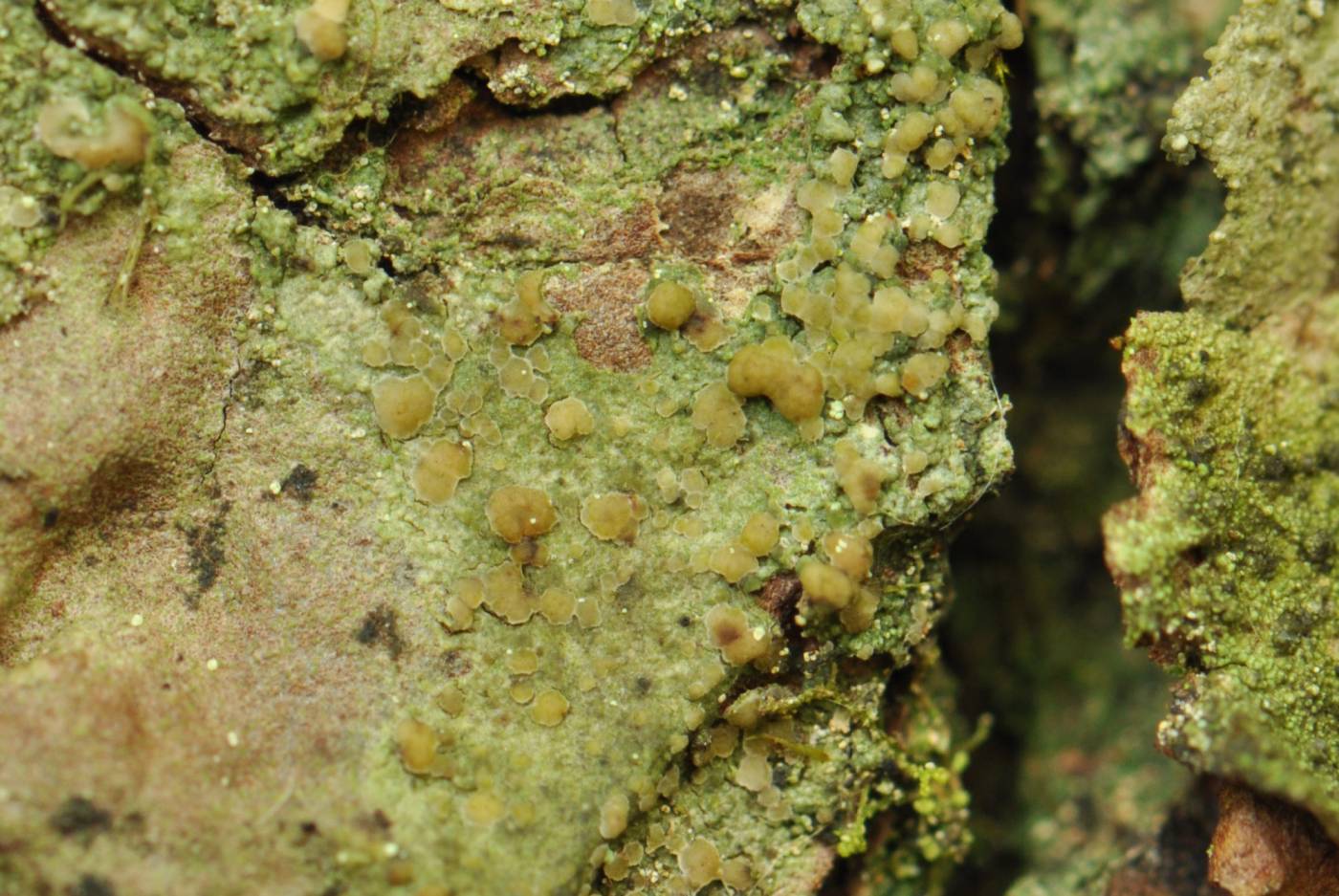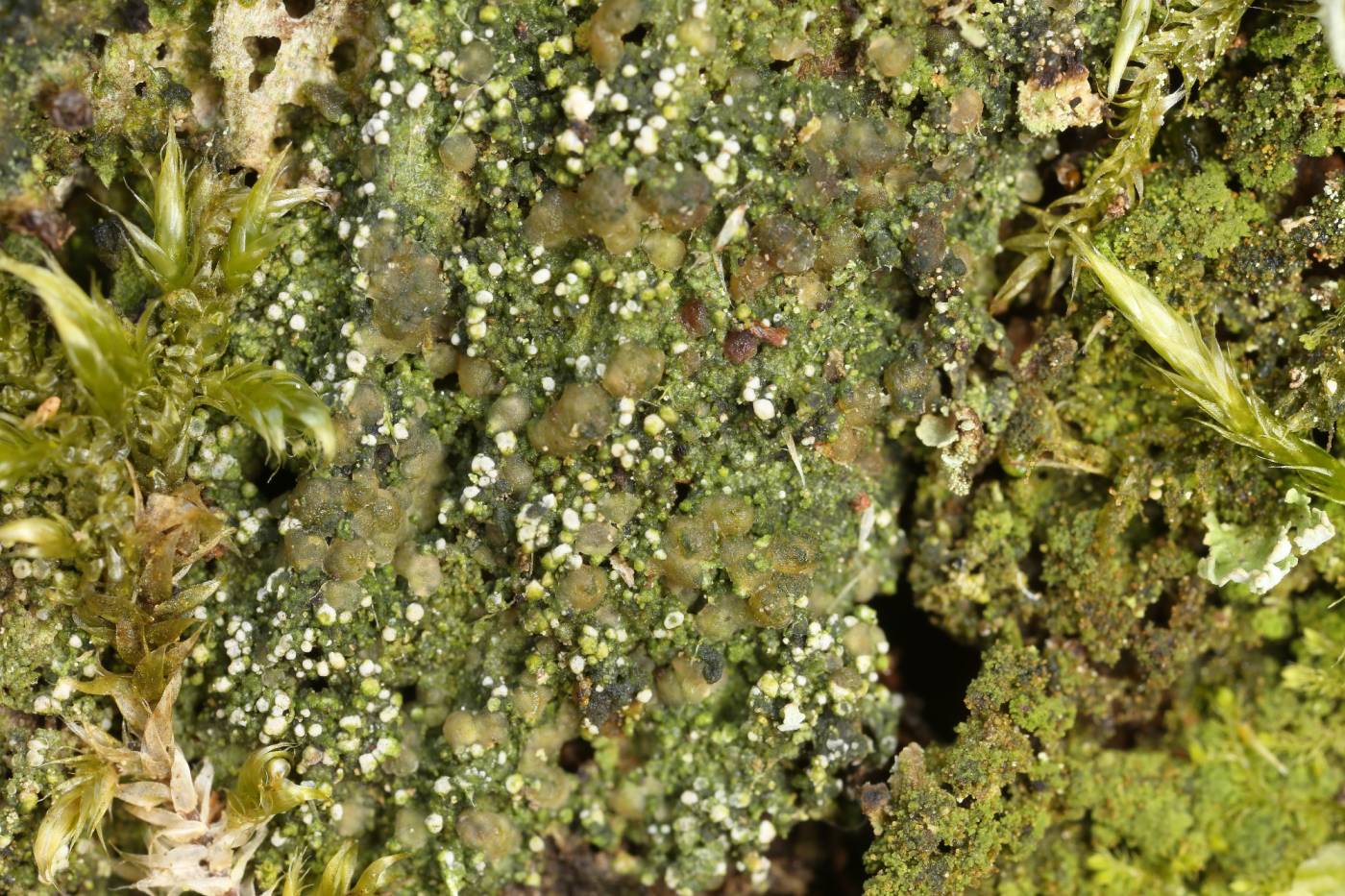The formation of white sporodochia instead of the usual pycnidia makes this species unique within the genus Micarea. These honeycombed conidia-forming structures are known mainly in non-lichenized fungi. Micarea adnata is a remarkable species of well-preserved old-growth forests, requiring a stable humid microclimate. The presence of dead wood (standing and lying wet wood) and older trees is also important. Under ideal conditions, the lichen may form extensive coatings, conspicuous particularly on the basal parts of trunks and exposed roots. In addition, it overgrows heavily weathered wood of conifers and occasionally also oaks (elsewhere in Europe). In the Czech Republic, its most common phorophytes are old firs and spruces, less frequently also other woody species including deciduous trees. In microclimatically suitable areas, where the species is abundant, it can exceptionally be found in managed forests (e.g. Malíček & Palice 2013). In the Czech Republic, the lichen is known from various localities in southern and western Bohemia, most of them are concentrated in the Šumava Mts and Novohradské hory Mts. Single localities are known in the Český les and Beskydy Mts.
Literature: Palice Z. (1999): New and noteworthy records of lichens in the Czech Republic. – Preslia 71: 289–336. Malíček J. & Palice Z. (2013): Lichens of the virgin forest reserve Žofínský prales (Czech Republic) and surrounding woodlands. – Herzogia 26: 253–292.
taxonomic classification:Ascomycota → Lecanoromycetes → Lecanorales → Pilocarpaceae → Micarea
Red List (Liška & Palice 2010):EN – endangered
Red List (Malíček 2023):C2 – strongly endangered
Occurrence in the Czech Republic
All records: 39, confirmed 38. One click on a selected square displays particular record(s), including their source(s).


